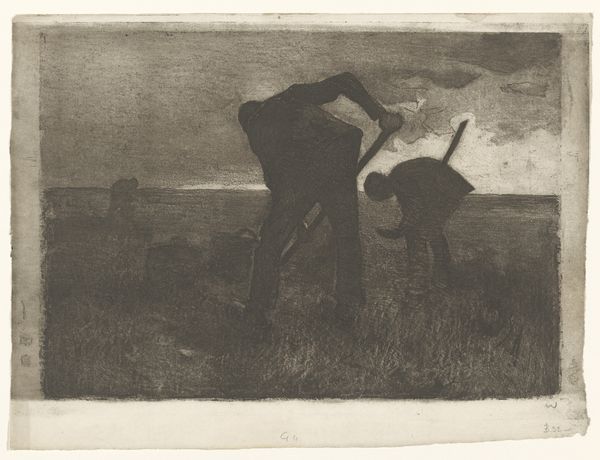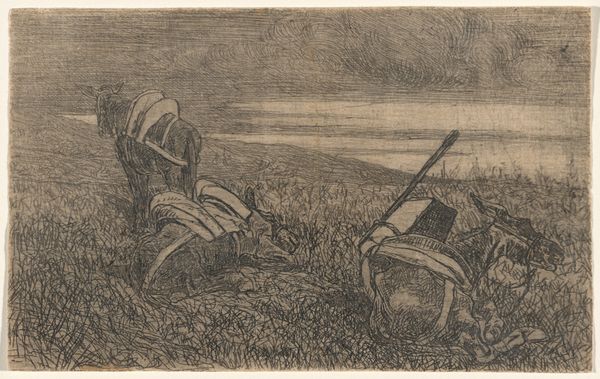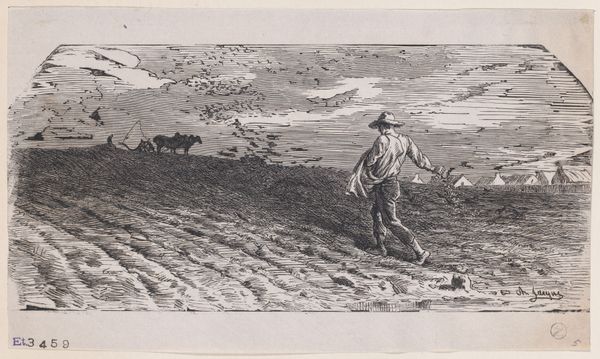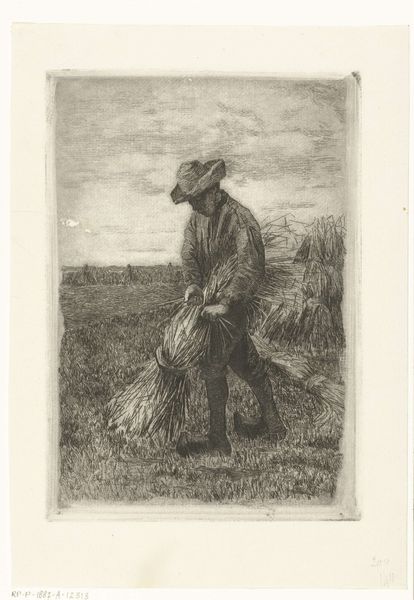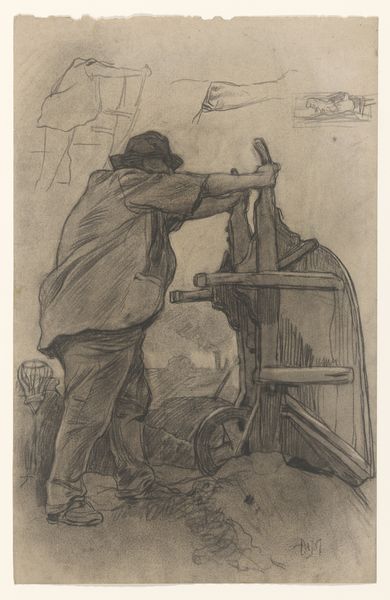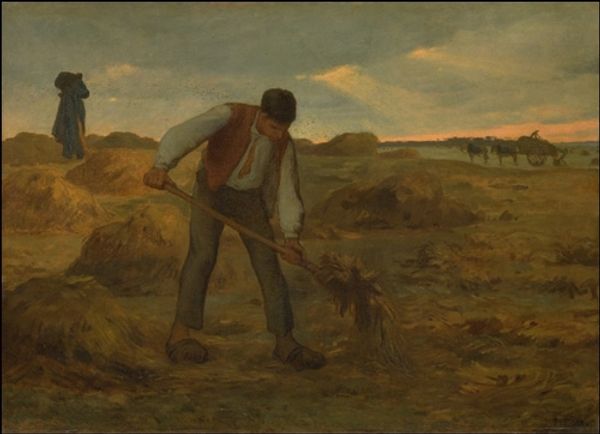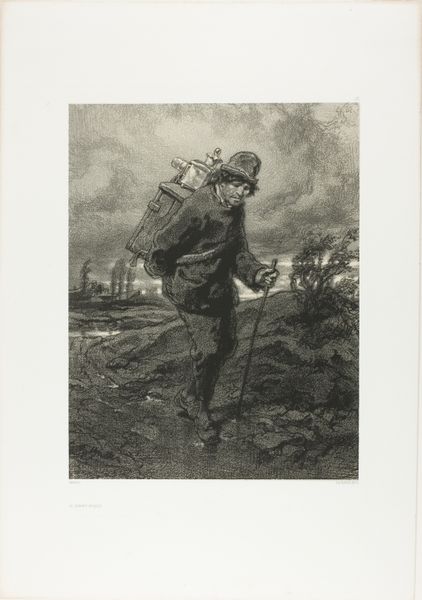
Evening, from the series, "Four Times of the Day" 1830 - 1875
0:00
0:00
Dimensions: Block: 5 7/8 x 8 5/8 in. (15 x 21.9 cm) Sheet: 8 7/16 × 11 3/8 in. (21.4 × 28.9 cm)
Copyright: Public Domain
Curator: Here we have Jean-François Millet's etching "Evening, from the series, 'Four Times of the Day'," created sometime between 1830 and 1875. It's a print that captures a scene of rural life. What are your initial thoughts? Editor: It's melancholy, isn’t it? The sky is heavy with what feels like both the promise and threat of night. Even the texture of the field seems weary. Curator: Millet had such a way of elevating the everyday into something… almost biblical, wouldn't you agree? The figure removing his smock, perhaps to take some rest at the end of the working day... but so much in this posture recalls something profound. Editor: It’s the ritual of the close of day. Notice the arc of the crescent moon mimics the arch of the man's back. These quiet gestures link him, on one hand, to nature's cycles and on the other, perhaps to generations of farmers who have known the weight of labor under that same moon. He's almost a silhouette of labor. Curator: Yes, that sense of cyclical time is powerful, isn't it? The return, the earth, the slow turning of things. There's such depth within this etching... and a little melancholy. The returning workers almost dissolve in this vast landscape. Editor: Indeed, it is poignant, but there is also a quiet strength in its starkness. I am always drawn to Millet's focus on hands – so prominent here too. Think about the psychological power in those gestures of weariness – a visual representation of work and connection to something older than themselves. That’s potent cultural memory right there, and a powerful visual metaphor, isn't it? Curator: A reminder that beauty can be found in simplicity. The image leaves you contemplating our relationship with time, labor, and the natural world. A beautifully understated yet deeply resonant work. Editor: And the weight that images carry. When we look at “Evening,” we look not only at Millet’s time, but across all time, our labor, and ultimately ourselves. It all lives within the print's dark strokes.
Comments
No comments
Be the first to comment and join the conversation on the ultimate creative platform.


